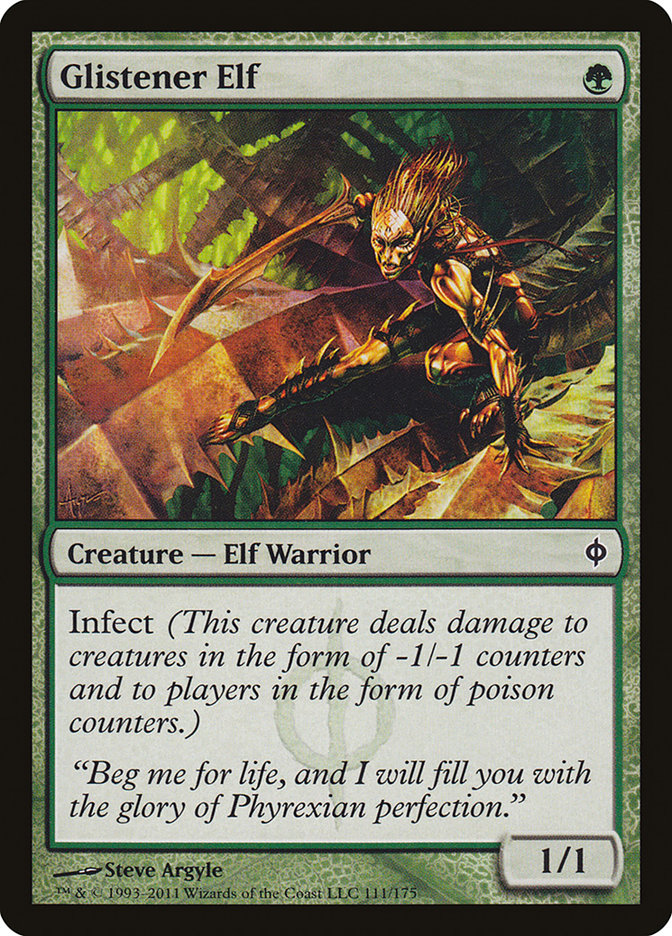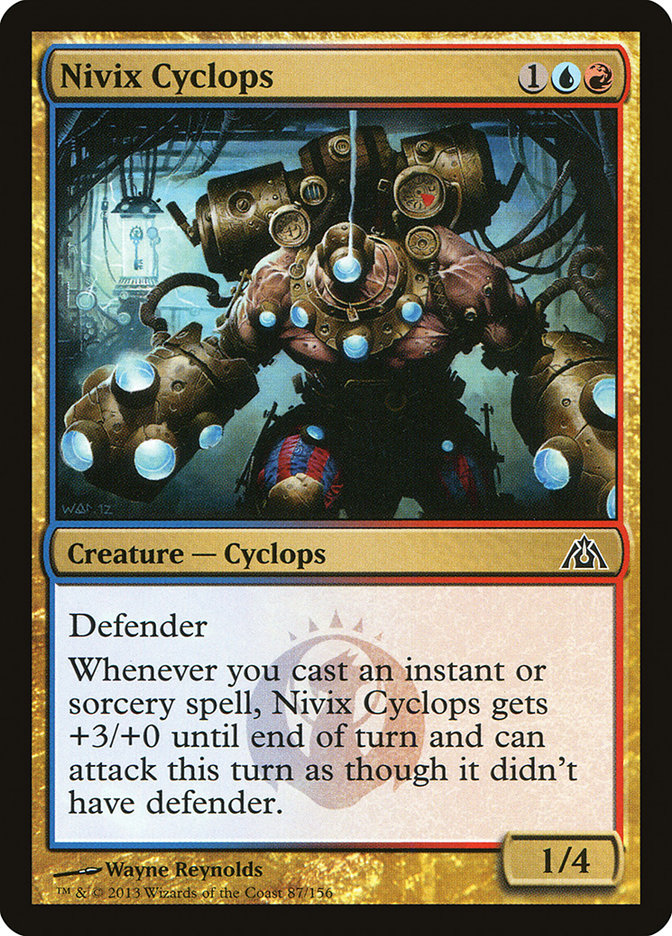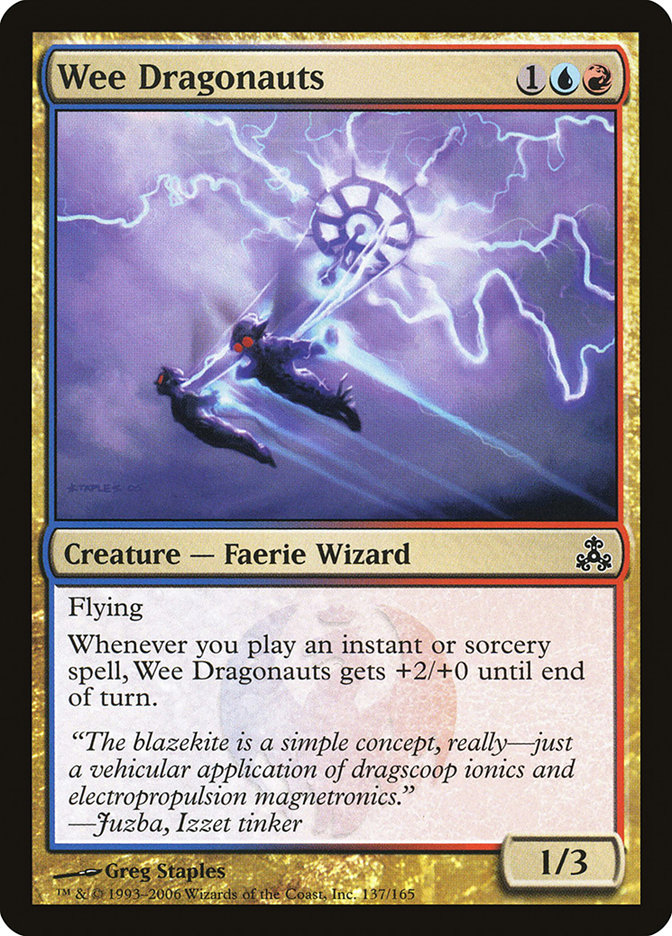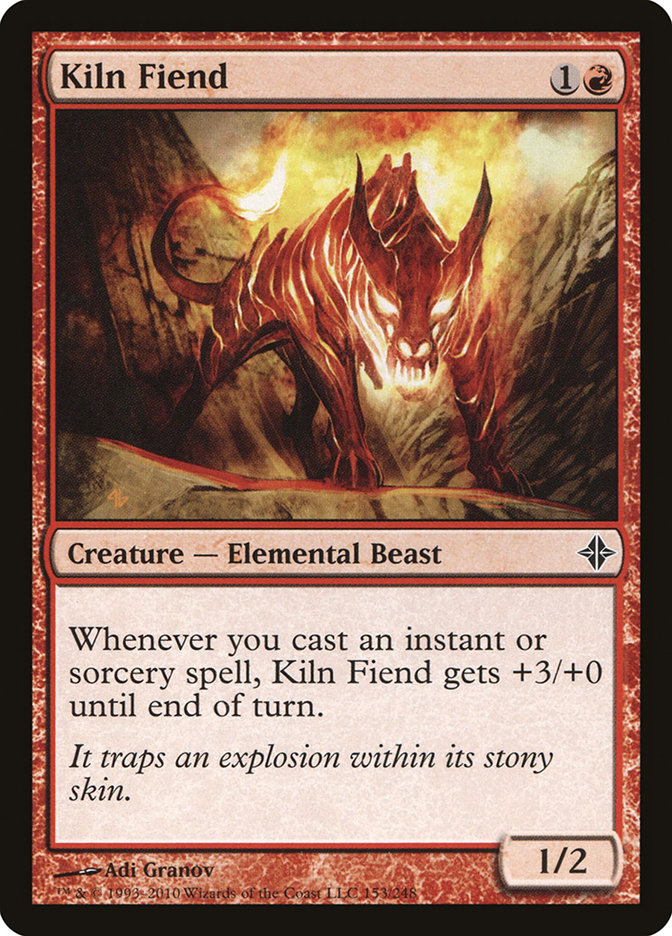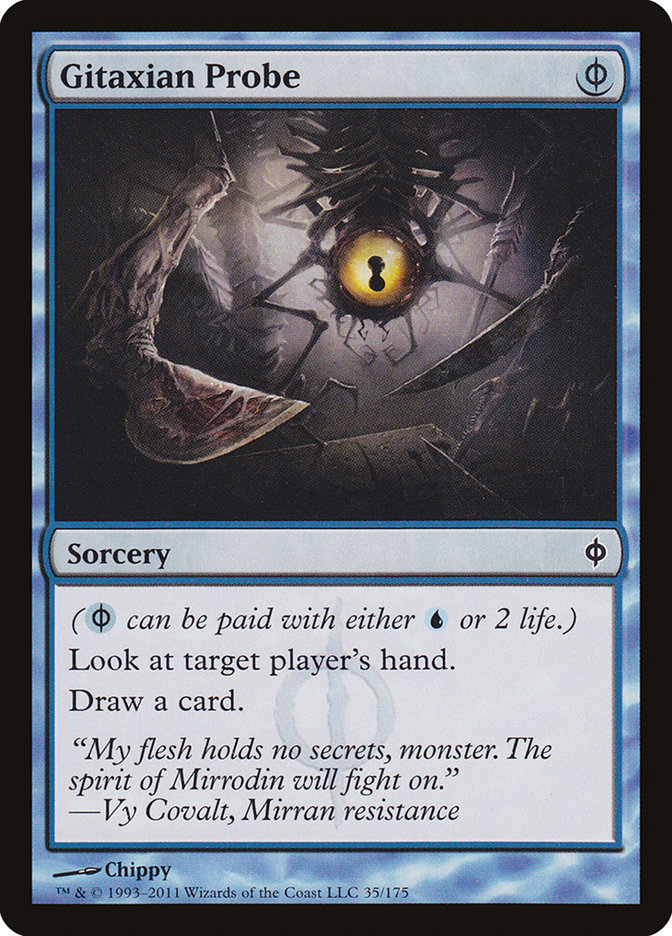Long live Pauper!
If you’ve been playing the format as long as I have, odds are you remember this guy.
I didn’t say fondlyremember!
This sneaky little poisonous Phyrexian Elf hasn’t been so popular since Invigorate got the boot, but for the purpose of this article, he’s acting as a symbol. Glistener Elf is indicative of an overarching and long-running strategic Pauper theme: the glass cannon. This could otherwise be described (and was in my previous article) as a haymaker plan, a Hail Mary pass, a one-shot kill, or perhaps more commonly as an all-in. A "Glistener Elf deck" is for all intents and purposes a marginally interactive aggro-combo blitz whose sole purpose is to end games early and often.
Back in the days of Invigorate, one thing was clear—you didn’t have to like Infect, but you had to respect it. If you didn’t, there would be painful pump-fueled consequences. The same can certainly be said of Pauper’s most popular haymaker plan, represented by this optically challenged behemoth:
Also known as Pauper’s favorite X-Men! ScottSummers.dek?
A card like Nivix Cyclops is really intuitive and inviting because it’s a very pointed "build around me" card. By that I mean its attributes basically inform players exactly how to best use it. The converted mana cost puts us in specific colors, and its ability is not only synergistic but also has precedent.
Before Dragon’s Mazeand the coincidental printing of Cyclops, fringe Pauper decks were being built around a very similar card:
Does anyone else picture them actually saying "wee!" in mid-air?
If you’d like to get a little more background on Wee Dragonauts’ time in Pauper, check out this article by SCG native Alex Ullman.
So we see a card like Nivix Cyclops and begin to draw parallels with preexisting cards. Two such cards have gotten rather friendly with the 1/4 pseudo-defender, and I bet you can guess what they are.
And so three creatures have found a place where they can celebrate their love of instants and sorceries. That place is called Classic Pauper, and what’s more is that Delver, Fiend, and Cyclops have a prevalent deck to call their very own.
Likes & Dislikes
A thing I really like about Cyclops decks is the fact that they usually must be answered. Any questionable keeps or removal-light draws are in for a considerable beating against Nivix Cyclops. These decks also have pseudo-unbeatable draws and a knack for racking up some free wins. They can kill as early as turn 3 but don’t have to thanks to the redundancy of Artful Dodge and the brutality that multiple copies of Cyclops is capable of.
As far as dislikes, it’s my opinion that these decks have some consistency issues (which I will get into later on in this article). On top of that, they play only twelve creatures. A deck that needs to stick one of twelve creatures in order to win will struggle often in the face of many removal spells. Lastly, these decks are somewhat non-interactive and therefore can’t do much to stop an opposing and similarly unforgiving game plan.
What To Call Them
These decks used to be known as Wee Fiend (due to the voluptuous chemistry between Wee Dragonauts and Kiln Fiend) and nowadays are referred to as Eye Candy, Nivix Fiend, etc. I like to call them Izzet Fiend, but at the end of the day, who cares? Call them whatever you want.
These days this is what they tend to look like:
Creatures (12)
Lands (17)
Spells (31)
- 4 Lightning Bolt
- 2 Shadow Rift
- 1 Reckless Charge
- 4 Ponder
- 1 Dispel
- 4 Preordain
- 3 Assault Strobe
- 1 Mutagenic Growth
- 4 Apostle's Blessing
- 4 Gitaxian Probe
- 3 Artful Dodge
Sideboard

You can probably conceptualize the deck’s game plan—utilize card manipulation to locate certain pieces, present threats, and actualize a lethal amount of damage with the aid of instants and sorceries. This actualization involves the trouncing of any disruptive opposition (in other words, circumnavigation of blockers, negation of removal spells, so on and so forth). Seems simple enough, right? On the contrary. Izzet Fiend has to meet specific needs in order to be optimal. Here are just a few examples.
The Mana Must Be Viable
I feel like this is where most of the Nivix Cyclops decks fail. Playing a two-color deck in Classic Pauper is very much doable (and with enough Chromatic Stars and Prophetic Prisms in the format, strategies like Affinity and Tron hover around four or five!)—but only if we incorporate an adequate number of color sources. Cyclops decks simply aren’t doing that.
It’s not exactly easy. Our turn 1 plays are all blue, but two thirds of our threats (which also happen to be our most relevant ones) require red. What’s more is that we’d like a high saturation of instants and sorceries and a low land count (in a perfect world at least). This can make constructing our mana base confusing and problematic.
The clearest and most concise piece of knowledge I could find to illustrate my thoughts on Cyclops’ mana comes from our very own Patrick Chapin. The following quote is taken from page 63 of his prolific digital work entitled Next Level Deckbuilding:
"In a two-color aggro deck, it is more likely that thirteen to fifteen sources are enough for each color."
The difference between these Cyclops decks and typical Pauper aggro is the heightened number of library manipulation spells we have access to. Nevertheless, library manipulation is not a get-out-of-jail-free card. Even with a full suite of Gitaxian Probes, Ponders, and Preordains, eleven blue sources and nine red just seems really anemic. It’s Draft deck mana, and I simply can’t get behind it. Let’s think about how we could potentially improve this.
The first step would be accepting that four copies of Izzet Guildgate are an absolute must. The second would be biasing the deck more clearly toward one color, likely blue, and accordingly taking Lightning Bolts, Reckless Charges, and the like out of our maindeck. This is a considerably harder pill to swallow but is at least food for thought (Assault Strobe, Kiln Fiend, and Nivix Cyclops would of course remain as our red components since they are so important to our strategy).
Thirdly, we can simply choose to add more lands. I don’t see a problem with this, as it’s a surefire means of providing us with additional color sources. The benefit of Evolving Wilds and Terramorphic Expanse as color fixers is compounded by the fact that they provide added utility when following up a Ponder.
We can increase eleven blue sources to fourteen and nine red sources to twelve by simply making these additions to the Izzet Fiend mana base:
+1 Evolving Wilds
+1 Izzet Guildgate
+1 Terramorphic Expanse
For experimentation’s sake, let’s put together a Cyclops list with these additions and a higher prevalence of blue spells:
Creatures (12)
Lands (20)
Spells (28)
- 4 Ponder
- 2 Dispel
- 3 Preordain
- 3 Assault Strobe
- 2 Mutagenic Growth
- 4 Apostle's Blessing
- 3 Gitaxian Probe
- 4 Vapor Snag
- 3 Artful Dodge
Sideboard

I’m pretty happy with how this looks, though it’s in dire need of testing. It’s not my intention to purport that my ideas are superior to anything that’s come before, as those decks have obviously done well in tournament settings and my list is mostly theory. With all that said, I don’t think it would kill anyone to play twenty lands in a deck that often needs its critical three-drop and needs three spells to go off in one turn for it to one-shot with Assault Strobe.
The tradeoff of Lightning Bolts for additional mana consistency may very well be worthwhile. I’ve cut a copy of Preordain because with more lands we’ll be less desperate for a dig spell. I’ve also shaved a Gitaxian Probe since the trifecta of Apostle’s Blessing, Probe, and Mutagenic Growth can end up being pretty painful for us.
The sideboard may seem whacky to some, but I think the "light touch" method is preferred in a deck like this (for the sake of maintaining consistency). It occurred to me while building the sideboard that Outwit is perhaps underplayed right now. Against Mono-Black Control, it nukes their edicts, Corrupts, and Sign in Bloods. It may also be correct to play something that counters Gray Merchant of Asphodel (Daze or Force Spike being the cheapest things I can think of).
Now that we’ve talked about mana and what I would do with the deck, let’s observe some of the other needs that should be met in a Cyclops deck.
The Spells Must Be Cheap
This is more or less a given but should always be kept in mind when making tweaks, considering cards, or adding new tech. The "combo" side of our strategy involves pumping our creatures in succession by casting spell after spell. This ensures a resounding dedicated strike.
On the subject of cheap, we understand that it doesn’t get any cheaper than free. This is where our trusty Phyrexian mana components come in handy.
Okay, so Apostle’s Blessing isn’t all the way free, but it’s very easily masked by an inconspicuous untapped Mountain. Each of these cards has more than one use, which is really superb. Blessing can save a creature from combat damage or removal, plus it gets past blockers. Gitaxian Probe cantrips and informs our subsequent lines of play. Mutagenic Growth piles on the damage but also can save a threat from lethal harm. It goes without saying that all of these cards also grant +3/+0 to our Fiendish and Cyclopean friends.
On the "expensive" end of things, we have our one-mana spells. These range from cantrips to Falter effects to various disruptive and tempo-based elements. You’ll note that Izzet Fiend does not tend to play instants or sorceries that cost any more than zero or one.
Let’s move on to the last need that should be met in a Cyclops deck.
The Answers Must Be Answered
To further illustrate this, let’s look over one final Cyclops list:
Creatures (12)
Lands (17)
Spells (31)
- 4 Lightning Bolt
- 2 Shadow Rift
- 1 Reckless Charge
- 4 Ponder
- 2 Dispel
- 4 Preordain
- 3 Assault Strobe
- 1 Mutagenic Growth
- 4 Apostle's Blessing
- 4 Gitaxian Probe
- 2 Artful Dodge
Sideboard

Note how this deck (and all of these decks for that matter) is not just trying to bash with Kiln Fiends. It’s also packing plenty of countermeasures to stop the opponent from stopping us . . . so we can bash with Kiln Fiends.
Dispel is a sweet multipurpose nullifier, nabbing edicts, removal, damage prevention, and opposing countermagic. Reckless Charge allows a topdecked creature to win the game in attrition battles where all of our other creatures have bitten the dust. Flaring Pain out the sideboard stops Fog and Circle of Protection effects from, well, fogging and protecting. Lastly, Mizzium Skin keeps critical threats alive against point removal (and other damage sources).
If you decide to play with Nivix Cyclops, just remember that it’s not enough to resolve and then pump Nivix Cyclops. You must also prepare for how your opponent might deal with him and determine what lengths you’re willing to go to in order to counteract.
Your Turn
What do you think of Nivix Cyclops as a card and of the Izzet Fiend deck in Pauper? How would you adjust the lists presented in today’s article? Would you have any interest in seeing me pilot an Izzet Fiend deck on video? I’m looking forward to chatting with all of you about it!

